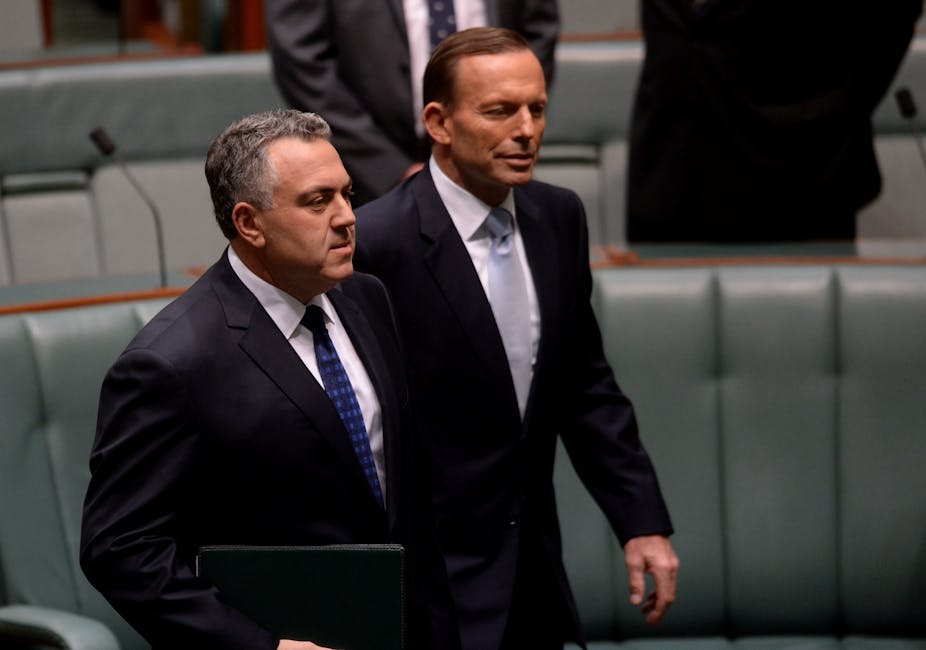The federal budget reignited debate over federal-state relations with a decision to cut $80 billion funding for the state responsibilities of schools and hospitals over the coming years. So how can federal-state co-operation in tax make Australia a better country?
A common feature of most federal systems of government is that the states depend on transfers from the Commonwealth for a substantial share of their revenue. In Australia, the states (and territories) account for about 40% of aggregate federal and state government expenditure, but they collect less than half of this sum from their own taxes and charges.
About 60% of the Commonwealth transfers to the states are GST revenue as an untied grant. A bit over 20% of state revenue comes as tied Commonwealth grants. Tied grants are those which the states accept with certain terms and conditions under Section 96 of the Constitution.
This “imbalance” of state expenditures and the taxes they collect is referred to as vertical fiscal imbalance, or VFI.
There are rational reasons for the misalignment of state expenditures and taxation found in all federal systems, not just Australia. However, a “hard budget constraint”, where states can both freely choose what program to increase or decrease and freely fund the changed expenditure with an increase or decrease in their own taxation, could improve the responsibility and accountability of state expenditure and taxation choices.
Increased competition
Apart from what’s specified in the Constitution, there are logical arguments for a more appropriate allocation of government spending and taxing powers between the Commonwealth and the states. This would involve the Commonwealth transferring some revenues to the states.
On the expenditure side, many government goods and services will be more efficiently supplied and better meet democratic principles and the diverse needs of people if provided by local government, rather than a one-size-fits-all central government. Education, health, law and order and transport infrastructure fall into this category.
However, government expenditures providing national public goods – including defence, foreign affairs and redistribution for social equity objectives – are more suited to central government provision. Macroeconomic management via fiscal and monetary policy levers also falls to the national level.
In reality, however, the line between a desirable Commonwealth and state expenditure is a broad, grey one.
Competitive federalism can facilitate the efficient provision of many government goods and services. Comparing expenditure programs and taxes across the different states may also lead to increased interstate migration of businesses and people.
Changes in peoples’ preferences, new technology and so forth call for a continuous process of experimentation and innovation to better deliver government goods and services. At the same time, competition between the states does not rule out co-operation between the states or with the Commonwealth.
Challenges of mobility for taxation
A second set of arguments behind an imbalance of state revenues and expenditures concerns the location of different taxes. To avoid inefficient migration of resources between the states, state tax revenue bases should be on relatively immobile inputs, especially economic rents on land and other natural resources.
Relatively geographic mobile inputs and a progressive income tax – to achieve society-wide redistribution and equity goals – are best left to the Commonwealth. Consumption and payroll taxes fall in between as arguably state or Commonwealth taxes. Simplicity for lower administration and compliance costs favour a central tax collection, even if states set different rates on a common base.
In principle, states’ dependence on the Commonwealth for over half of their revenues need not be a problem if the states face a “hard budget constraint”. If a state wants to spend $100 million more or less on education or health, it can both freely choose what program to increase or decrease and freely fund the changed expenditure with an increase or decrease in its own taxation.
As a result, states are publicly and transparently responsible and accountable for changes in their budget policies.
Resolving the stand-off
Under current Commonwealth-state financial relations the states arguably do not always face a hard budget constraint. In this context, a number of reforms could improve the accountability of both the Commonwealth and the states to improve spending and taxing programs.
First, the removal of joint involvement of two levels of government in the same expenditure area is necessary. A clarification of responsibility would reduce challenges in accountability, blame-shifting and duplicated administration.
Second, replacing Commonwealth tied grants with untied transfers would increase state autonomy and responsibility for their expenditures. The levels of the grants should be credible, transparent and – to an extent – independent of short-term fiscal circumstances of both the Commonwealth and states.
Third, a hard budget constraint requires state governments to have access to their own broad-based and relatively efficient taxes. An obvious option is to broaden the land tax base. Removing the special exemptions for a broad payroll tax base likely will require a co-operative agreement across the states.
Fourth, co-operation between the Commonwealth and the states – and between the states themselves – would be assisted with institutional arrangements to provide greater equity of influence and a longer-term view of challenges to Commonwealth-state financial arrangements.
The forthcoming white paper on reforming the federation provides a vital opportunity to improve Commonwealth-state financial relations for a more productive economy and improved accountability of governments. Realistic reforms to federal-state financial relations are possible with the right amount of political will.
Further reading: The Reforming the federation series

